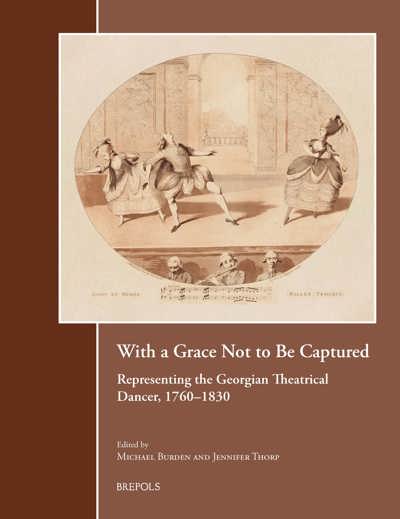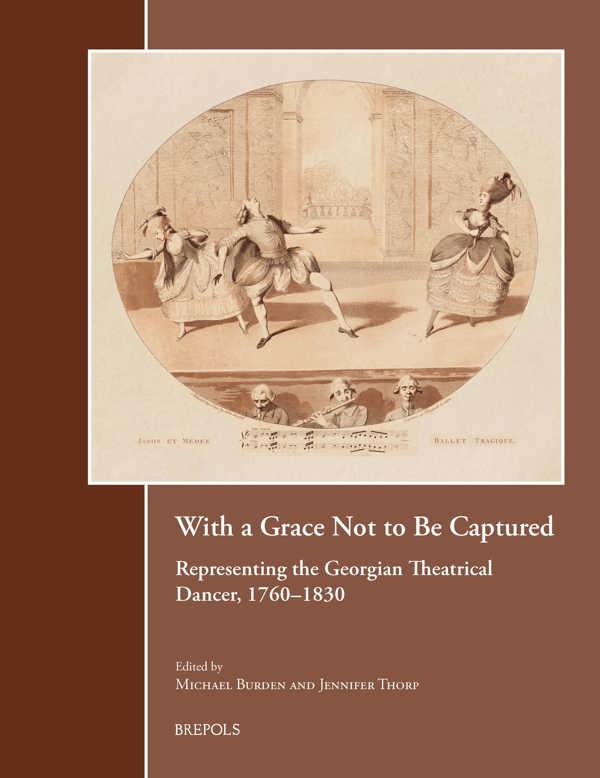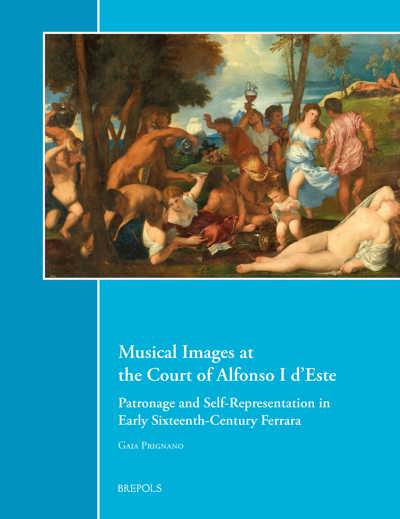
With a Grace Not to Be Captured: Representing the Georgian Theatrical Dancer, 1760-1830
Michael Burden, Jennifer Thorp (eds)
- Pages: x + 198 p.
- Size:216 x 280 mm
- Illustrations:2 b/w, 77 col.
- Language(s):English
- Publication Year:2021
- € 75,00 EXCL. VAT RETAIL PRICE
- ISBN: 978-2-503-58356-3
- Paperback
- Available
Winner of the Claire Brook Award 2021 (The Barry S. Brook Center for Music Research and Documentation at the Graduate Center of the City University of New York).
A new volume on the rise and social impact of the celebrity dancer in late-Georgian London, as viewed through portraits, caricatures and eyewitness descriptions of the time.
Michael Burden is Professor in Opera Studies at Oxford University. His published research is on aspects of dance and theatre in the London theatres of the 17th, 18th, and 19th centuries. He is currently completing a volume on the staging of opera in London between 1660 and 1860; his five-volume collection of opera documents, London Opera Observed, and his study of the London years of the soprano Regina Mingotti were both published in 2013, and - edited with Jennifer Thorp - The Works of Monsieur Noverre translated from the French in 2014.
Jennifer Thorp has a particular interest in the dance of royal court and public theatre in England and France from the late-seventeenth to the late-eighteenth centuries. She has co-edited, with Michael Burden, a study of Le Ballet de la Nuit (2010), and The Works of Monsieur Noverre translated from the French, 1783 (2014), and is currently preparing for publication a biography and study of the dances of the London dancing-master Mr Isaac.
If dance on the London stage can be said to have had a ‘golden age’, it might be thought to be the years between 1760 and 1830. The changes included the arrival on the London stage of ballet d’action, and the appearance of Vestris and Noverre. Dance in the theatre and the opera house continued to be essential to the financial success of any season, and it was a ubiquitous element in the London theatrical season both in dramatic works and as entr’acte pieces. These years also saw important changes that affected theatrical dance and thus public perceptions of celebrity dancers.
Despite this, and in comparison with other performers, far fewer portraits of dancers were produced. This can be explained in part by a visual culture that privileged a particularly national view of celebrity. As one of the contributors argues in this volume, ‘The rhetoric of a “British school of art” contributed to marginalizing foreign singers and dancers on the London stage, as well as other immigrant artisans who had a major role to play in the economics of eighteenth-century London leisure life.’
Through the examination of a series of major dancers, this volume examines the way in which the images created represented a dancer’s image, which was then often exploited through the medium of print. The images discussed in the volume include formal and informal portraits, portraits in character, prints, and caricatures.
Preface
I. The London Dancer Portrait in Context
Portraiture and the Import of Dancers in Eighteenth-Century London — Shearer West
II. Dancers of the Opera and Playhouse
Garrick’s Muse? Eva Maria Veigel and her Husband — James Harriman-Smith
Portraits of Jean-Georges Noverre — Jennifer Thorp
Dancers Acting in 1781: The Vestris, père et fils, Adelaide Simonet, and Giovanna Baccelli — Judith Milhous
Natural Beauty or ‘Paint-Painted’? Giovanna Baccelli by Thomas Gainsborough — Joanna Jarvis
‘Grace, Beauty, and Surprising Agility’ – Representations of Barbarina Campanini, 1742–48 — Samantha Owens
Portraying Heroic Masculinity: James Harvey D’Egville on Stage — Keith Cavers
III. The ‘Other’ Dancers
Philip Astley and the Amphitheatre — Joe Lockwood
Tumbling Images: Carlo Antonio Delpini at Work — Michael Burden
Bibliography
About the Authors
Index




